Born and raised in Greater London since 1990, Daisy is an artist with an education in design and driven by craft.
Since graduating from Central St Martins with a degree in fashion design, her practice has continued to revolve around textiles and fabric manipulation but has developed into the realms of sculpture and performance.
In this interview, Daisy explains why she loves to explore the simple running stitch and free embroidery to create her incredible 3D wearable pieces, which are born out of instinct.
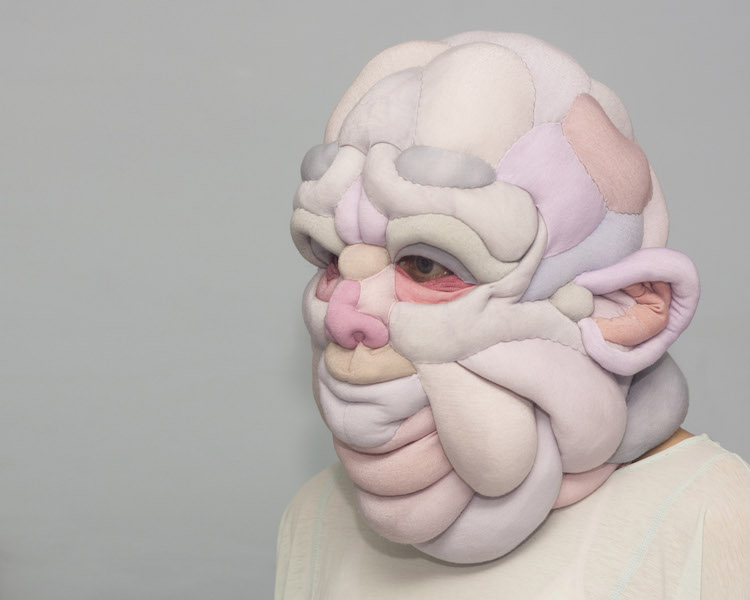
A feeling of joy
TextileArtist.org: What initially attracted you to textiles as a medium?
Daisy Collingridge: I like making things. I get such a feeling of joy when I make anything. I relish in problem-solving and the growth of the thing you are making. The act of making is something that gives me a real thrill.
It just happens that my choice of medium is fabric. Fabric is an exciting medium as it can take on so many roles depending on how you manipulate it. It can flop, flow, be round, be smooth, be textured, be firm, be rigid. Anything.
And, more specifically, how was your imagination captured by stitch?
I work predominately in 3D; I use stitch to join different shapes together to create form. I like the functionality of stitch. Its role is basic. It brings two, or more, bits of fabric together. There is the whole realm of decorative stitch, which I have started to explore with free machine quilting. But it’s still the functionality of the stitch that I find most appealing.
In free machine quilting, the stitch has a dual purpose of both being functional and decorative; but it’s the way the density of the stitch changes the rigidity of the fabric that I find most compelling.
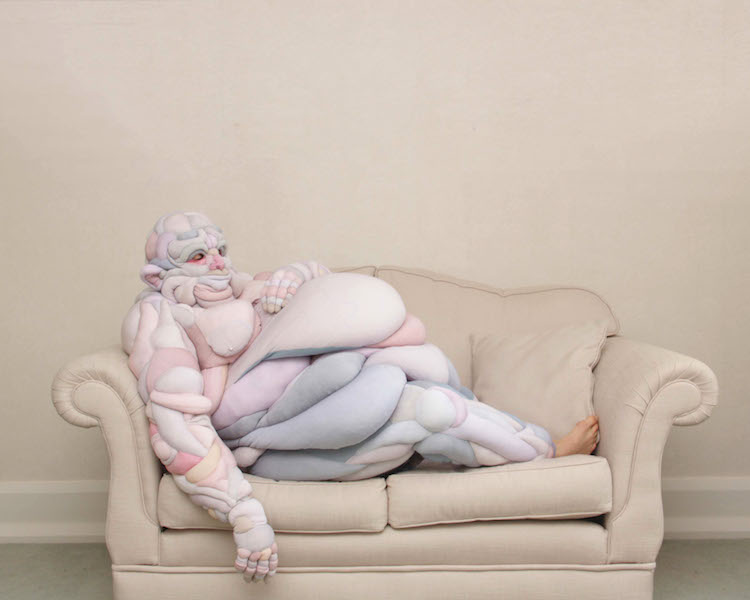
An Aladin’s cave
What or who were your early influences and how has your upbringing influenced your work?
I have my wonderful mother to blame for my love of making things. Mum has always been there to guide me on technique and listen to my ideas.
She is a crafty sort; she has dabbled in everything over the years, making our house an Aladdin’s cave of kits and potions for making all sorts of things; patchwork cutting boards, silk painting stretchers and dyes, teddy bear joints, books on how to upholster and crochet.
If I wake up feeling uninspired all I have to do is dive into the attic and I’m sure to find something to kit start an idea.
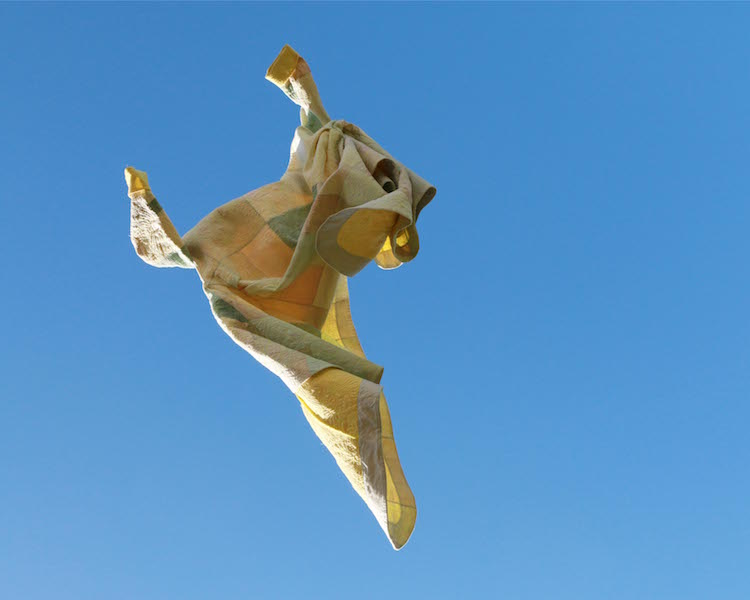
What was your route to becoming an artist?
I almost did geography at university. Other than that minor blimp I have never deviated much from the path of being an artist. I started making stuff from a very early age. At the age of 11 I had made 47 teddy bears; I know this because they all have birth certificates for each one.
I studied Art at GSCE, A-Level, did an Art Foundation at Loughborough and then rejected that geography degree for a 4-year whirlwind at Central St Martins making fashion instead.
I have dipped my toe in the world of Fashion; I’ve worked freelance, worked as an intern designer at Louis Vuitton and worked in a Wedding Dress Atelier.
The biggest struggle I had as a designer is that the better you get, the less hands-on making you get to do. Physically making something is the where I get my inspiration and thrill from, so it is an artists’ life for me!
Tell us a bit about your chosen techniques.
I would say my current technique is the called the art of the ‘squishy’. It’s an entertaining challenge to create large sculptural pieces using very basic techniques. The stitch used is a simple running stitch, but it’s the sculptural qualities of layering wadding and stretching jersey that creates these smooth round forms.
Colour is an important aspect too. I love dyeing. Pastels are my favourite at the moment. I use Procion dyes to colour jersey and cotton. All done from my kitchen sink.
I also make use of my pattern cutting skills from my fashion design degree. I like to play around with creating 3D forms out of 2D shapes. I can occupy myself for hours just cutting out shapes and sewing them together to find out what form it will take. My squishy free machine embroidered dresses where made in this way, with no formal patterns.
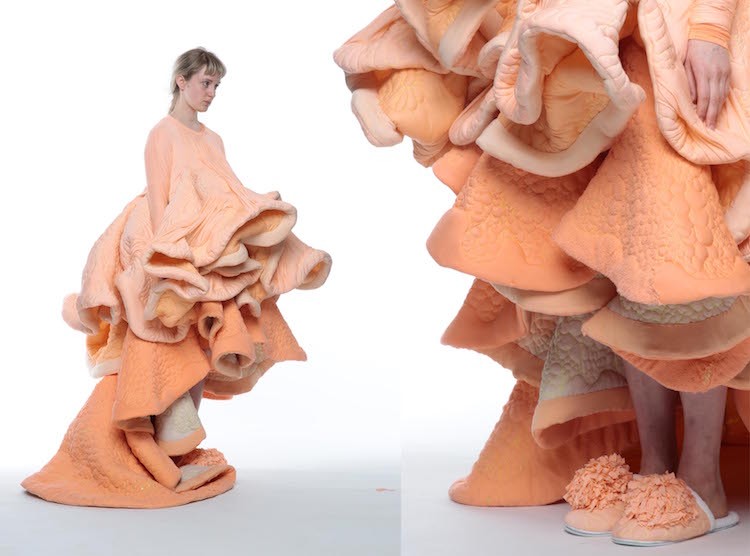
Movement and sculpture
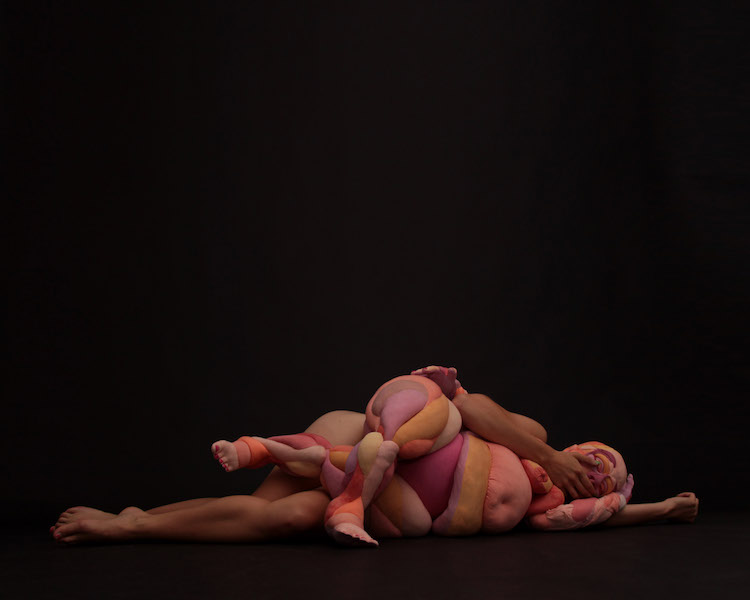
How would you describe your work and where do you think it fits within the sphere of contemporary art?
I think contemporary art has been moving into the interdisciplinary for some time. My work works sit between sculpture and theatre and performance art. When multiple artistic practices collide I think it produces the most engaging work.
Particularly, now, in this current time of constant videos and screens, the contemporary art world needs to keep up to be able to engage with its audience.
I am hoping to delve more into the performance side with my work as movement is a key part in my sculptures and video is something I would like to explore.
To see my first exploration into film click here.
Do you use a sketchbook? If not, what preparatory work do you do?
Its funny, you spend your whole art education having the importance of a sketchbook drilled into you and all I use now is scrappy moleskin with everything from shopping lists to notions of an idea. So no, I don’t keep a sketchbook but I wish I did!
My process seems to evolve from doodles of ideas, often scrawled down at night when I’m trying to sleep. I then start impulsively making and actively doing. My whole graduation collection was made with very little pattern cutting. I just cut and sewed until it leads me somewhere good.
For my sculptures, I make small versions out of Plasticine as well a few squishy objects to practice my sample stitches on. But if I had to describe my process in one word it would be impulsive.
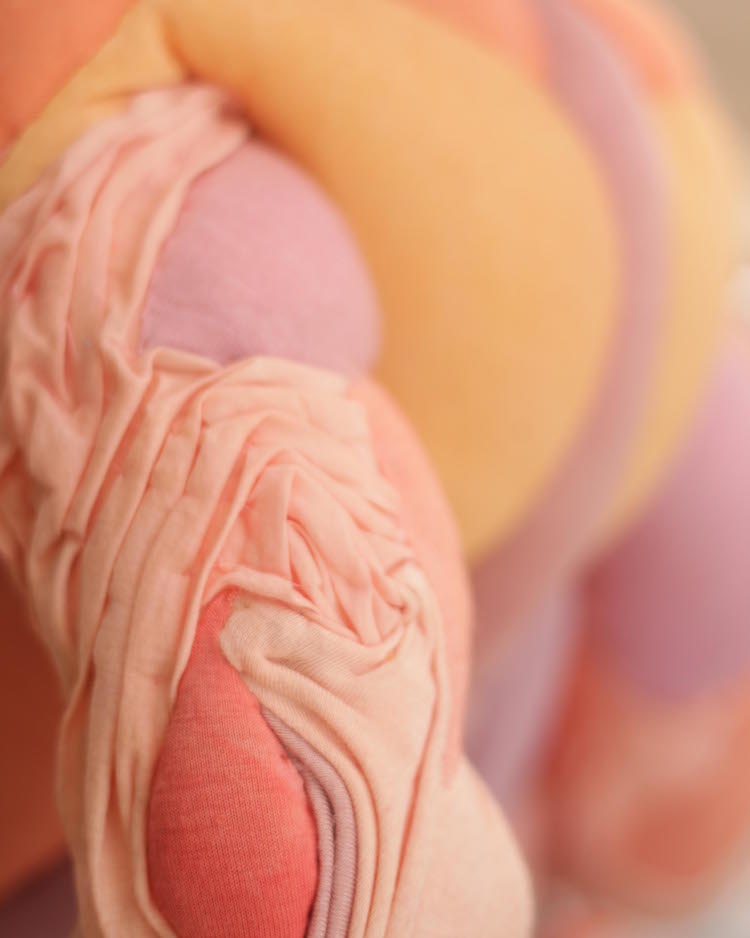
Tell us about your process from conception to conclusion.
There is an image floating around on the Internet called The Creative Process. It lists the 6 main stages that you go through in a creative a project. I most definitely identify with these stages. I am going to share them, with a few extra notes from me.
- This is Awesome – I get an idea and I run with it, I’m head over heels excited.
- This is tricky – I actually start to work how to make the ridiculous notion in my head and realise it may take significantly longer than an afternoon to complete…
- This is shit – I decide that this was a terrible idea, that I will never be able to make it in the time allowed, it will never be as good as the version in my head.
- I am shit – Oh man. Nobody understands what I am making. It is just ridiculous. Why am I a spending my whole weekends doing this? Who’s idea was this anyway? Stupid life choices.
- This might be okay – It’s coming together now. I can begin to see the whole picture, I’m sure ill be able to convince others this was a worthwhile endeavour.
- This is Awesome – I have literally made the best thing ever. It’s going to change the world. Maybe.
I think this succinct list sums it up most eloquently. I should hand them out as flyers to everyone that surrounds me so they know where I am at in the process!
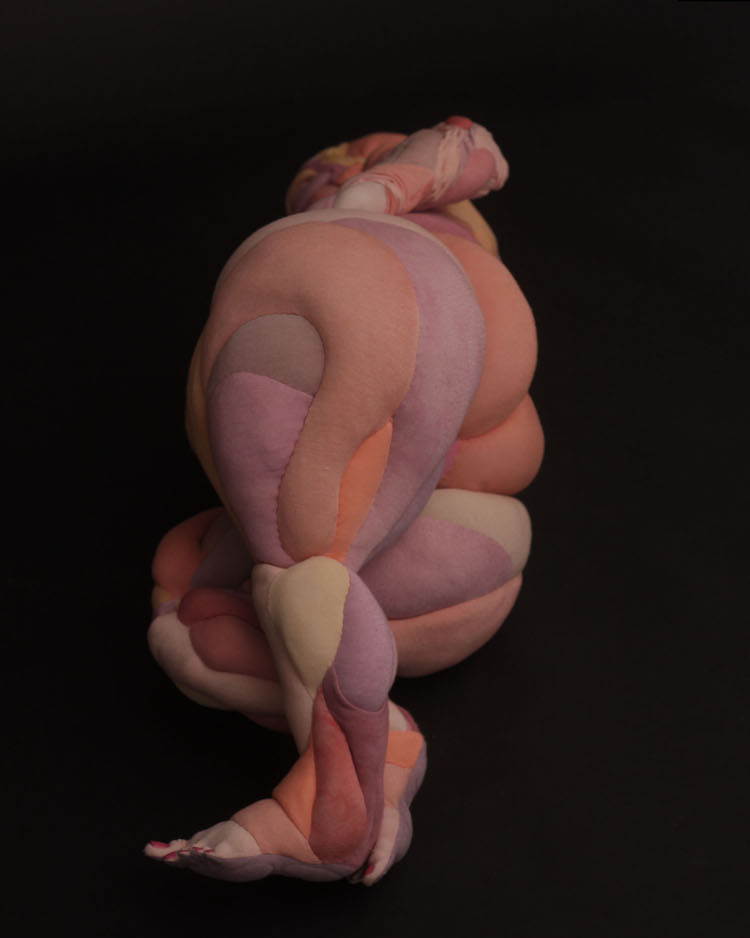
What environment do you like to work in?
I am still flat sharing… my flatmates are mum and dad. My family home is magic. It’s full of stuff to make stuff.
We are all guilty hoarders so when I have an idea I can start impulsively making straight away because the house has so much to offer. I am a lucky girl.
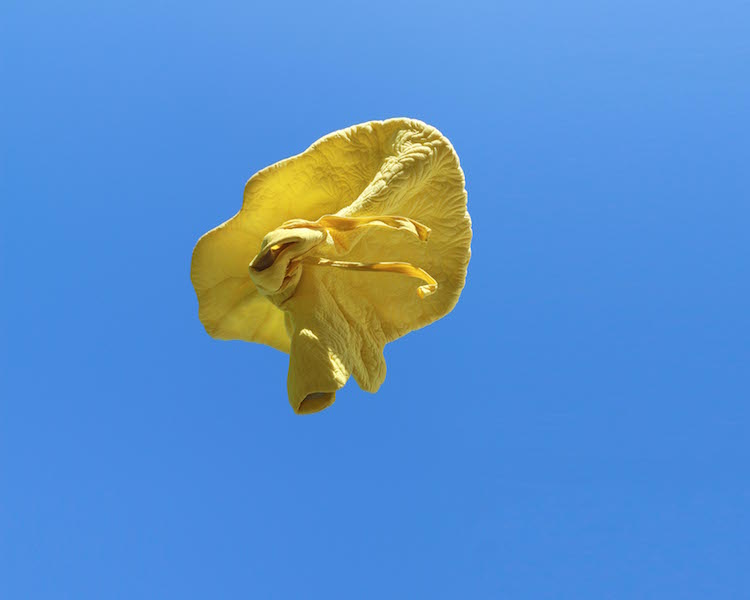
What currently inspires you?
The word ‘Squishy’
Who have been your major influences and why?
My mum; her constant need to sew, knit, crochet, cook and make things has rubbed off on me. I have only ever had encouragement to create from both my parents.
Louise Bourgeois; she was so prolific. Her work was so varied but I naturally have an affinity with her textiles based work. Her success solidifies my faith that textiles art can be taken seriously in the contemporary art world. She was an artist, who not a ‘textiles’ artist.
Tell us about a piece of your work that holds particularly fond memories and why?
I made a dress for Bjork! It was not long after graduating and I got an email from one of Bjorks’ people (who incidentally is a fabulous artist himself) and I presumed it was a scam (cynic that I am).
After some cross-checking, I realised it was legit and soon met them both in London. I designed and made a yellow, free machine quilted dress inspired by my graduate collection.
She wore it on stage in Lyon as part of the ‘Vulnicura’ tour in 2015. It is a huge honour to have such a fierce artistic visionary wear one of your pieces. She is one of a kind, so consistently individual and original. I’m still dining out on that tale.
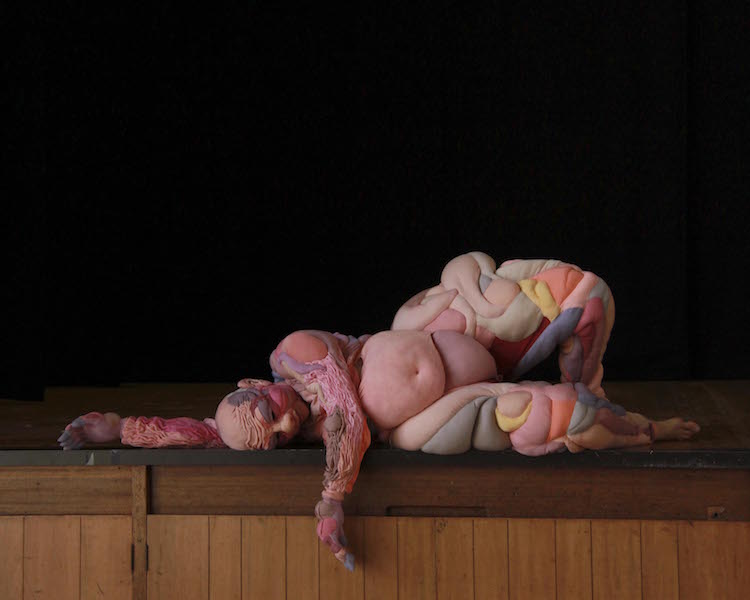
Can you recommend 3 or 4 books for textile artists?
I’m not sure how relevant these books are for textiles artists in general, but these are books that I refer to frequently:
The Art of Manipulating Fabric by Colette Wolff – always inspiring to see what you can achieve with a simple bit of fabric
Pattern Magic by Tomoko Nakamichi – amazing ways to create shape and form by pattern cutting.
Anatomy for the artist by Sarah Simblett – a useful study of the human body and beautiful pictures too.
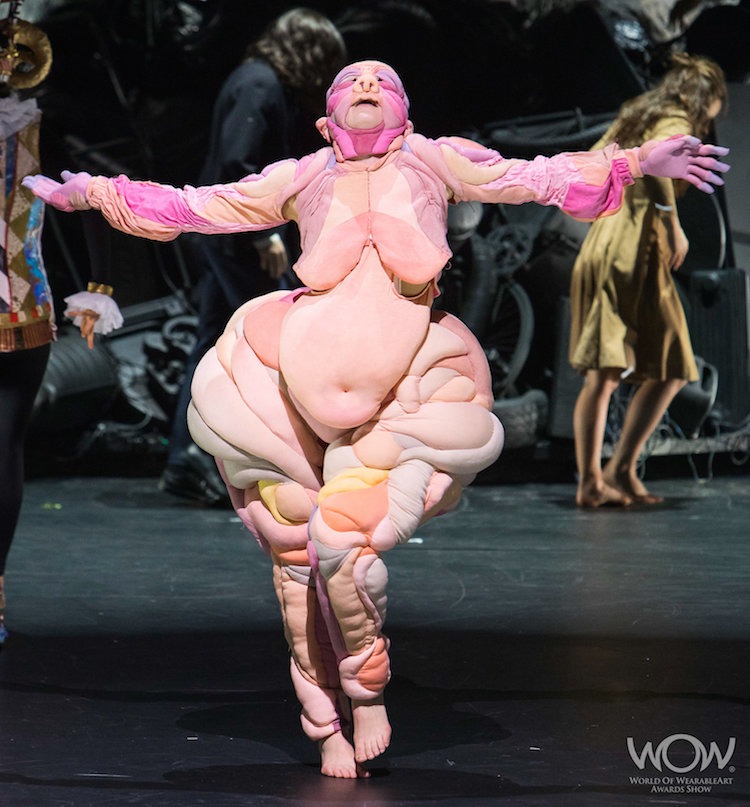
For more information visit: www.daisycollingridge.com or find Daisy on Instagram.
Let your friends know about this artist’s work by sharing the article on social media. It’s easy – click the buttons below!
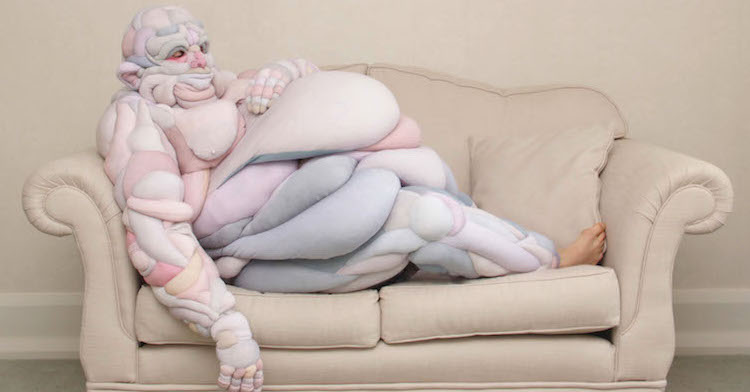

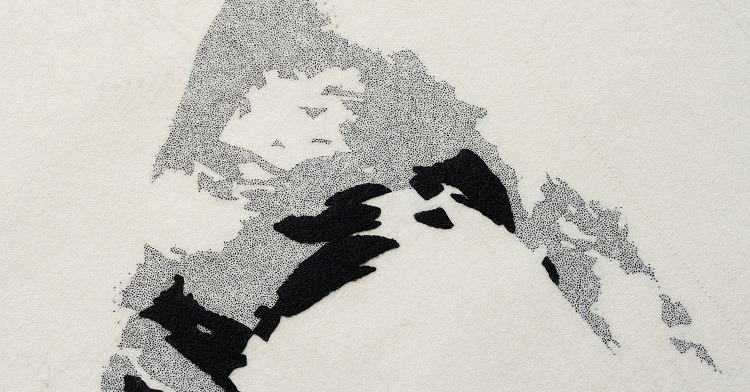
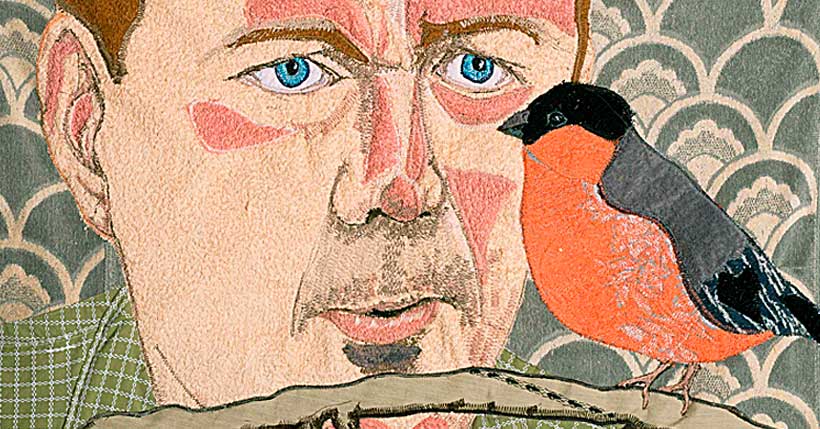
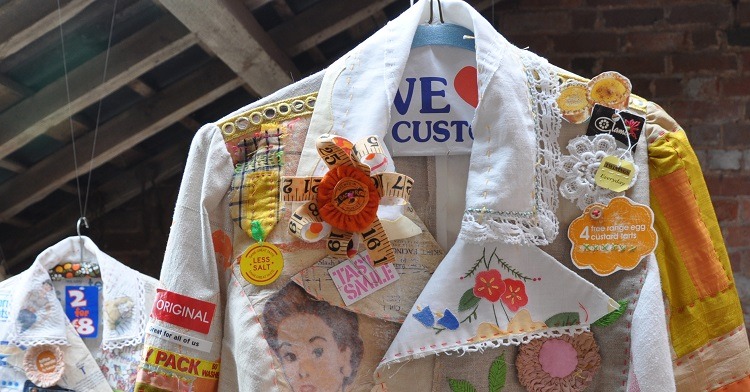
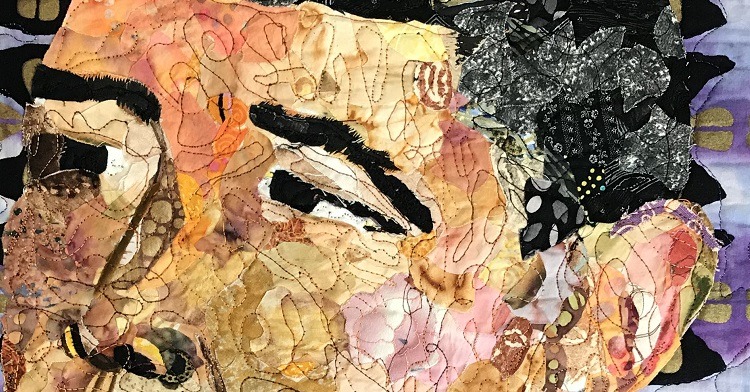
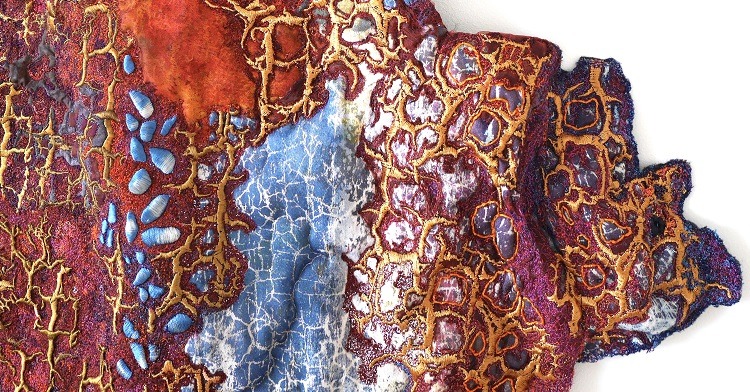
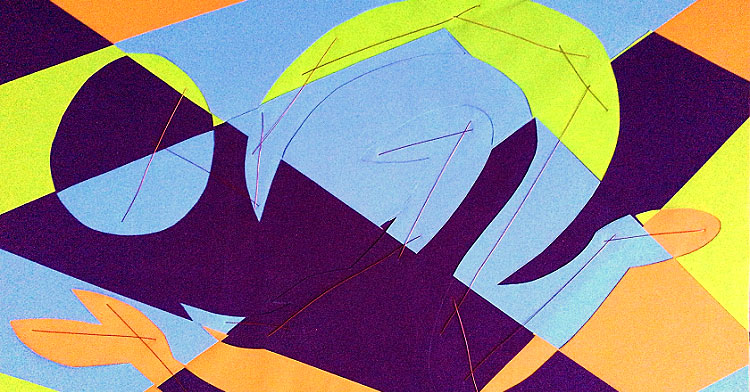
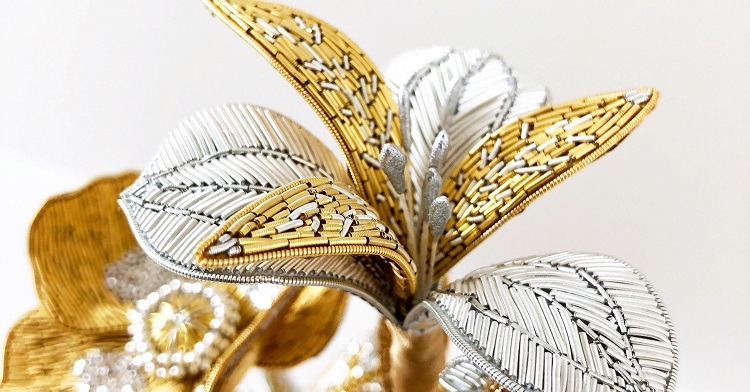
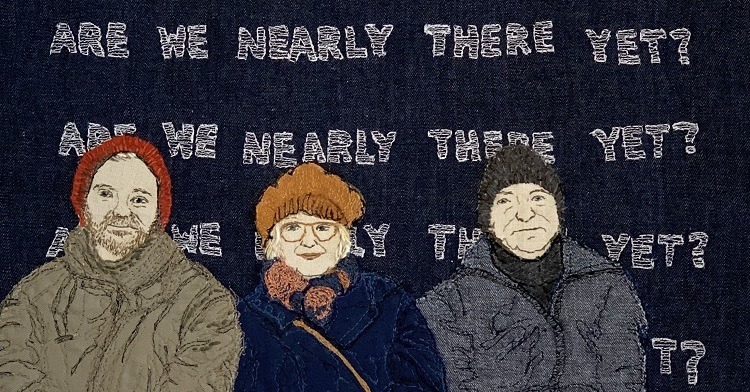
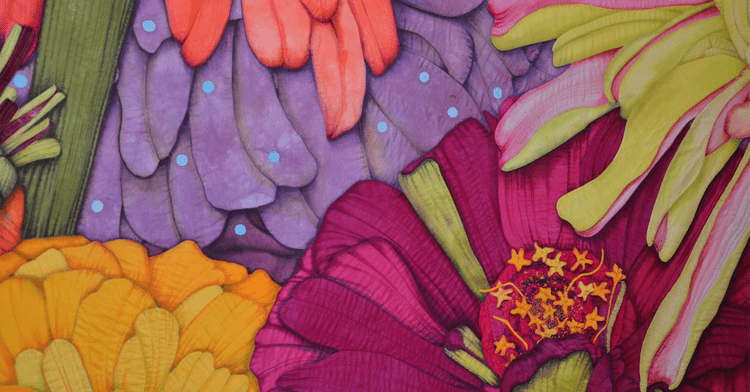
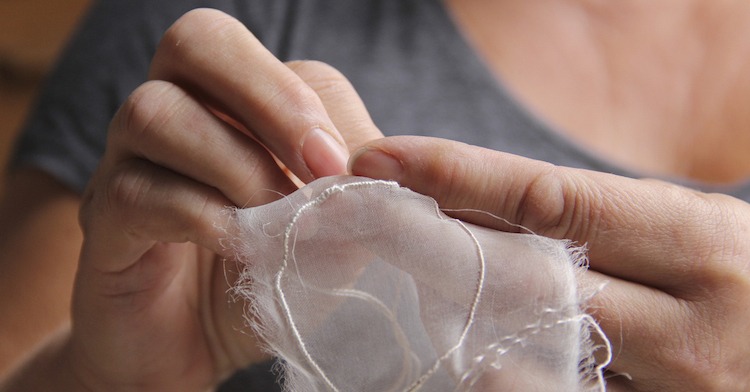
Comments